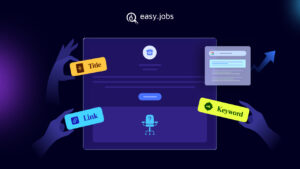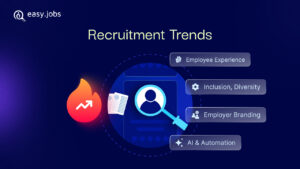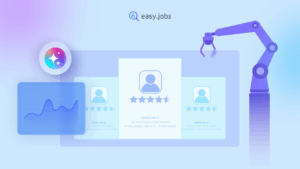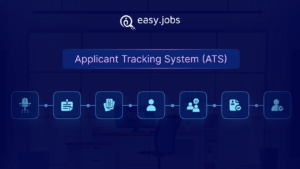A smooth employee offboarding process is crucial to advancing your organization’s growth and branding. And it’s the most hassle procedure in the HR process. Need to mention, that most organizations fail to implement them properly. Later that results in a dilemma in the long run.
If you plan to build a smoother offboarding process for your company, this post will guide you through.

Employee onboarding and offboarding both are parts of the HR process. But, if you can get to know the HR team, you will find that most of them get puzzled about handling the employee offboarding process. They will all agree that the following statement holds true for them.
‘Employee Offboarding Is More Important Than Onboarding In HR Process’
Let’s dive into the blog to see what employee offboarding is about and get the ultimate checklist to help you smooth out your employee offboarding process.
What Is Employee Offboarding?
This blog is prepared in such a way that from the beginner to the expert of the HR team will benefit. Let’s start with the definition of employee offboarding process.
A separation between an employee and a company is called offboarding. This is the process of what happens when an employee leaves an organization. An employee offboarding process is needed after any employee resignation, retirement, or termination occurs.
Employee termination, in essence, ensures that everything is in order when an employee leaves, so you don’t find yourself contacting a former employee two weeks later for his or her ID badge. Additionally, this employee termination process gives you a chance to find out what you may be able to improve for your employees currently and in the future.
The Importance Of Offboarding In HR Process
Now let’s focus on why you should start practicing employee termination and make it an essential part of your HR process. This is not surprising when you consider that as many as one-third of ex-employees still have access to company data.
Approximately 20% of organizations have suffered data breaches by former employees. You can prevent this by ensuring people don’t have access to company networks or systems after they leave the company as part of your offboarding process.
Here are some reasons why employee offboarding is important:
1. Keep Communication Line Open For Boomerang Employees
When the HR team doesn’t go through the employee offboarding process, then the employee and organization both have to go through rough patches. Such as employee payment kept due, important access to the organization still stays with the former employee, and so on. All of these things hurt relations between the former employee and the organization.

Thus, if you plan to hire former employees in more experienced positions in the future, they may not return because of the last bad experience. Obviously, this is not good for any organization.
Can’t deny that rehiring former employees can be advantageous for an organization. As re-hiring former employees becomes productive and operational faster, and as we know that they fit our company culture, this method is cost-effective as well. Due to tough recruitment times and a growing talent shortage, many companies today will not turn down a boomerang employee.
2. Key Source Of Promoting Employer Brand
Basically, rather than in-house employees, former employees play a bigger part in promoting the employer brand of your organization as former employees go for other new companies and new environments. If you could offer formers a smooth employee termination, that would create a positive impact.
You will likely speak highly of your former employer if you have fond memories of your last days there. Despite not working for them anymore, you are likely to be positive when others ask about your time there. This, in turn, will positively influence the company’s employer brand, which in turn will benefit its appeal to candidates.

3. Keep Organization Data Secure
A proper employee termination process is incredibly important for data security reasons. In spite of the fact that we don’t like to think about it if someone isn’t leaving voluntarily, they might act out of spite or desperation and harm the organization. This can be done by deleting files or by publishing the company’s client database.
4. Opportunity To Convert Former Employees Into Customers
Former employees can be considered to be customers when you run a product- or service-based business. Keeping rejected candidates happy is essential, but keeping former employees loyal is key to maintaining your candidate experience. Imagine if you can turn a former employee who is still a customer even after he or she leaves the company, that would be great advertising for your brand. You onboarded show how well you treat your customers through the way you treat them.
Step By Step Guide: How To Implement Employee Termination In Your Company
Wondering which steps should be taken in the employee offboarding? Here is presenting the employee offboarding checklist which you can easily integrate into your HR process. Let’s get started.
Step 1: Commence With Thanksgiving For Service
As previously mentioned, employee termination can occur from both the company end and employee end. But whatever the reason is you should start the employee offboarding process by thanking the employee for his or her long-time service, dedication, and efforts. It’s never a good practice to shut down communication with the employee immediately.
It’s more warming to start the employee offboarding process in person, rather than in cold email. If your organization is fully remote, then you can schedule a personalized online meeting for the employee.
Step 2: Clear Up Everything About The Employee's Departure
The next step is to communicate with the employee and collect all the information about his last day at the office or departure time. When the employee is terminated by himself, you can ask for the day he or she wants to terminate employment and take necessary steps regarding that.
Also, if the organization is offering termination, then the organization side should give 1 or 2 months’ notice. So that the employee can wrap up all his works smoothly.
Don’t forget to announce the employee departure date to the entire team!
Step 3: Arrange For The Transfer Of Knowledge
You might be wondering why you need former employees’ knowledge when you are recruiting new ones. But this simple step has great significance. It is possible the would-be former employee was in charge of leading or planning.
Therefore, you can schedule a knowledge-transfer session instead of allowing employees to work in a dark and sloth-like fashion. This way, every employee will be on the same page, and the next person who succeeds him or her won’t have to start from scratch.

Aside from this information, it’s always good to ask people to prepare a handover document, internal documentation, or video with some tips for whoever will be taking over their role in the future. Automating or incorporating tasks into standard operating procedures can be done by the departing employee. By doing so, you’ll save both time and money. Further, keep the doors open, so that if you are missing some knowledge after they leave, you can ask them for help, which they will gladly provide.
Step 4: Take Away Former Employee’s System Access
Keeping your system as well as data under former employees will cost you in the long run. It will directly create concern about your organization’s security also. So you have to revoke all the system access from the employee. Of course, this includes email, internal platforms, etc. but depending on someone’s role, numerous other accesses may need to be revoked.
Step 5: Take Care Of Company Assets
When you onboard a new employee, it is obvious that you have been given job responsibilities related to office equipment like laptops, mouse, vehicles, cell phones, and others. Don’t forget to ask the departing employee to return company types of equipment. The newly onboarded employees can utilize these assets and it will be a cost-effective move.
Step 6: Arrange A Warm Farewell Party
Never think arranging a farewell for a departing employee is a waste of time and money. Arranging a farewell is a good way to show appreciation towards the departing employee and will also help you to boost your employer’s brand. Additionally, the departing employee and the current employee will have the chance to say goodbye and thank each other.
As part of the employee offboarding process, you can also conduct exit interviews. You can gain insights and suggestions on company workflow in the exit interview, along with guiding the departing employee about his shortcomings and areas of improvement. It’s possible to learn how to improve your organization’s weaknesses and strengths by conducting an exit interview.
Step 7: Clarify All Kinds Of Financial Dependency
Check out your finance department whether the departing employee has any dependency there. Even though payroll systems have built-in functionality for this, you want to ensure that payroll is actually handling the final payment.
In order to streamline the employee offboarding process, make sure you include all the information they need, such as the deadline, the notice period, and any upcoming holidays. It’s never a good practice to hold the payroll of departing employees, as it will negatively affect the employer brand.
Step 8: Try To Keep In Touch With Former Employees
When an employee goes through the offboarding process, that doesn’t mean that it has to be the end of everything. It is possible to keep in touch with former employees in various ways. There are talent pools and alumni groups, for example. By using either option, you can send former employees the latest company news and vacancies so they can stay updated.
The benefits of staying in touch go beyond just keeping in touch. It can be useful when you have lost knowledge that was only known to the departing employee, as we briefly mentioned earlier. You can also use it to help their successor.
Streamline Your Offboarding Process
A successful employee offboarding process will help your organization to go a long way. If you can apart all these 8 steps of the employee offboarding process, surely it will streamline your organization’s workflow and create new opportunities.
Start implementing a complete employee offboarding process into your HR process. In case you need further guidance or suggestions, please do not hesitate to contact our support team or other manager-related people through our Facebook community. And to be the first to get these kinds of stunning blogs, insights, tutorials, and all, subscribe to our blog.






